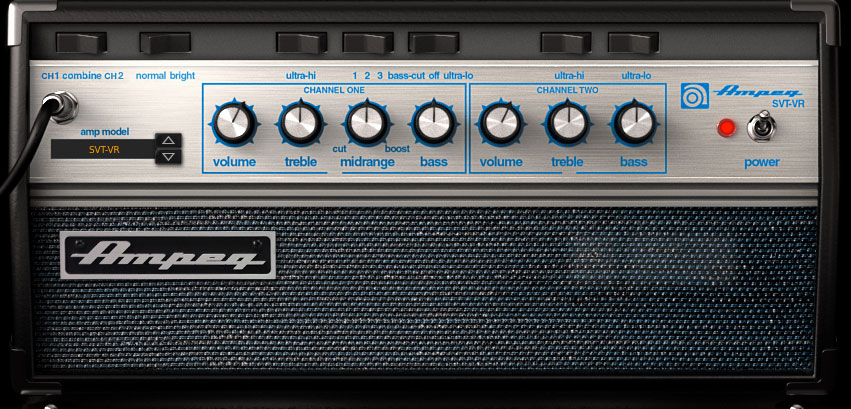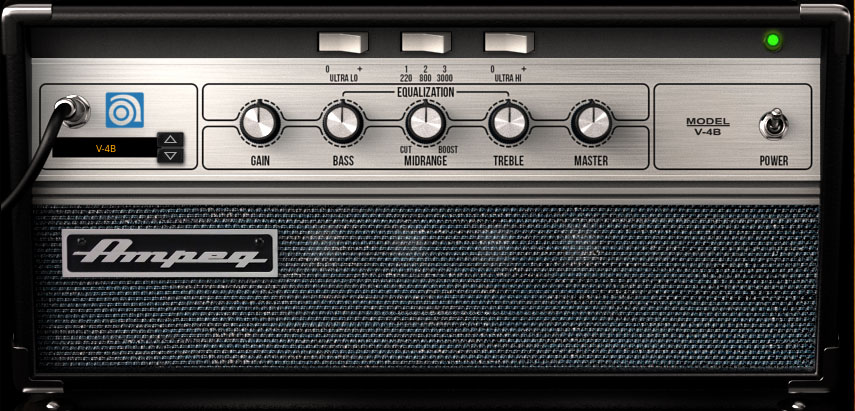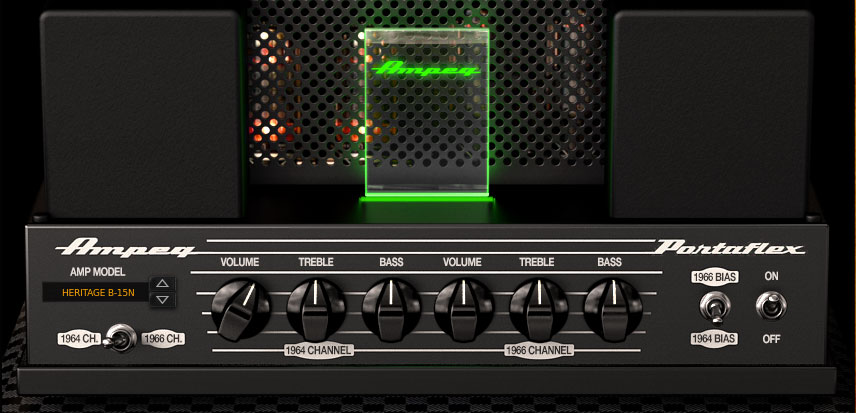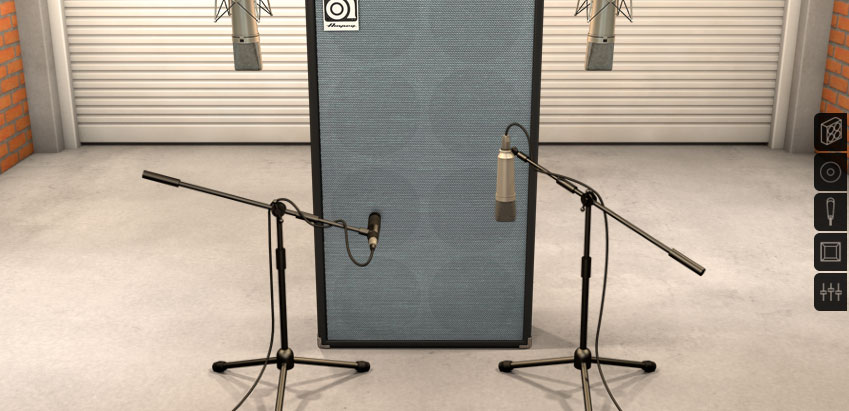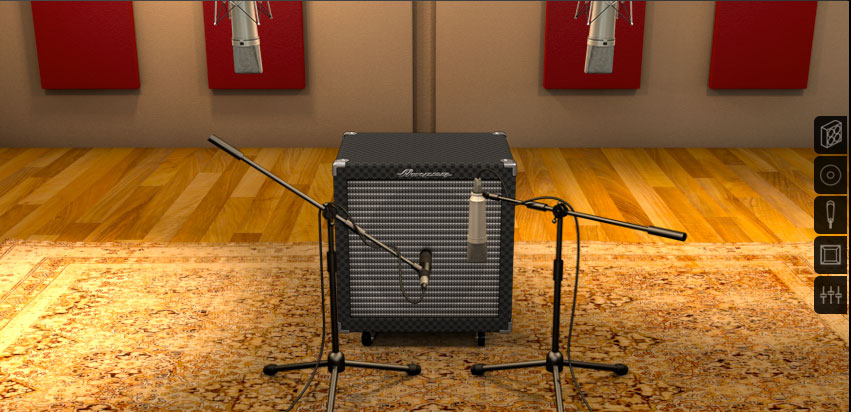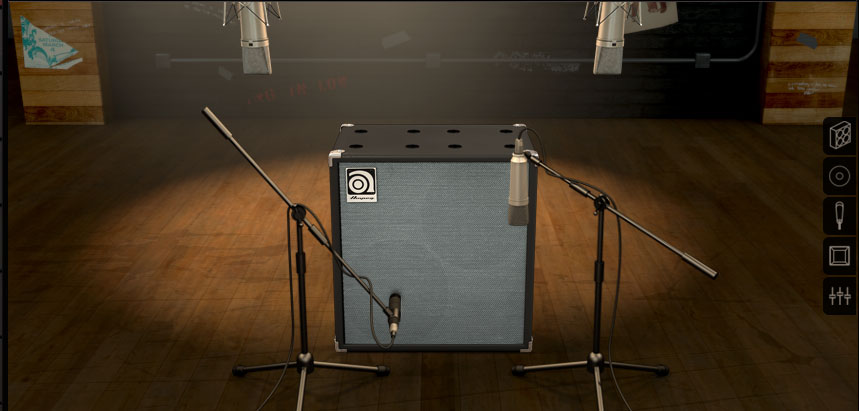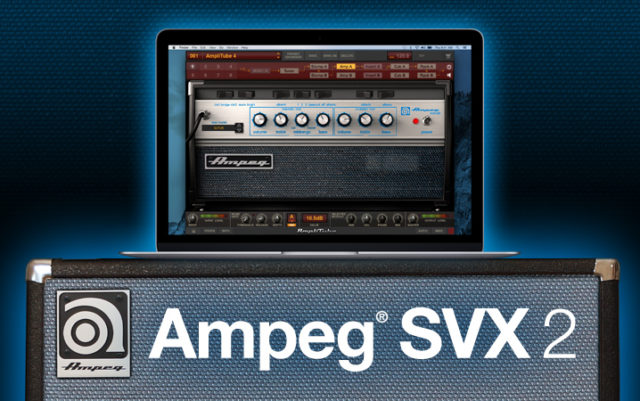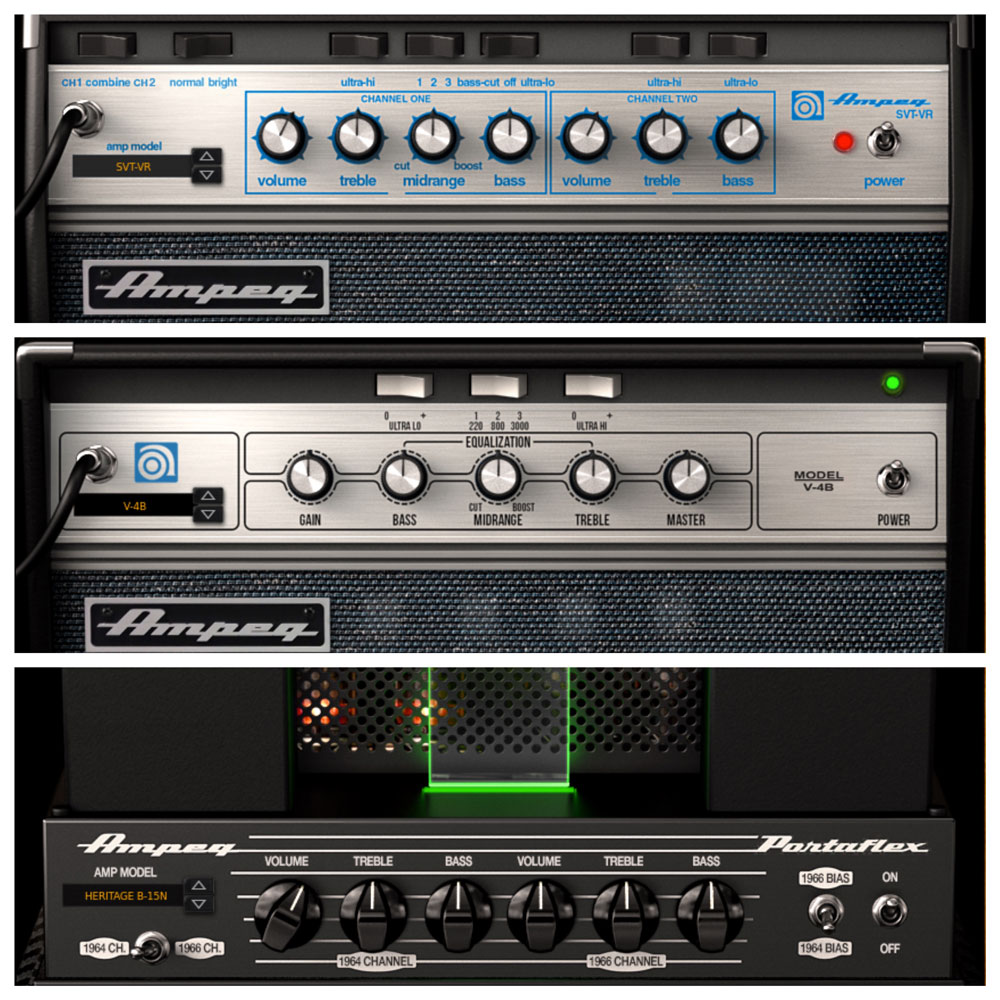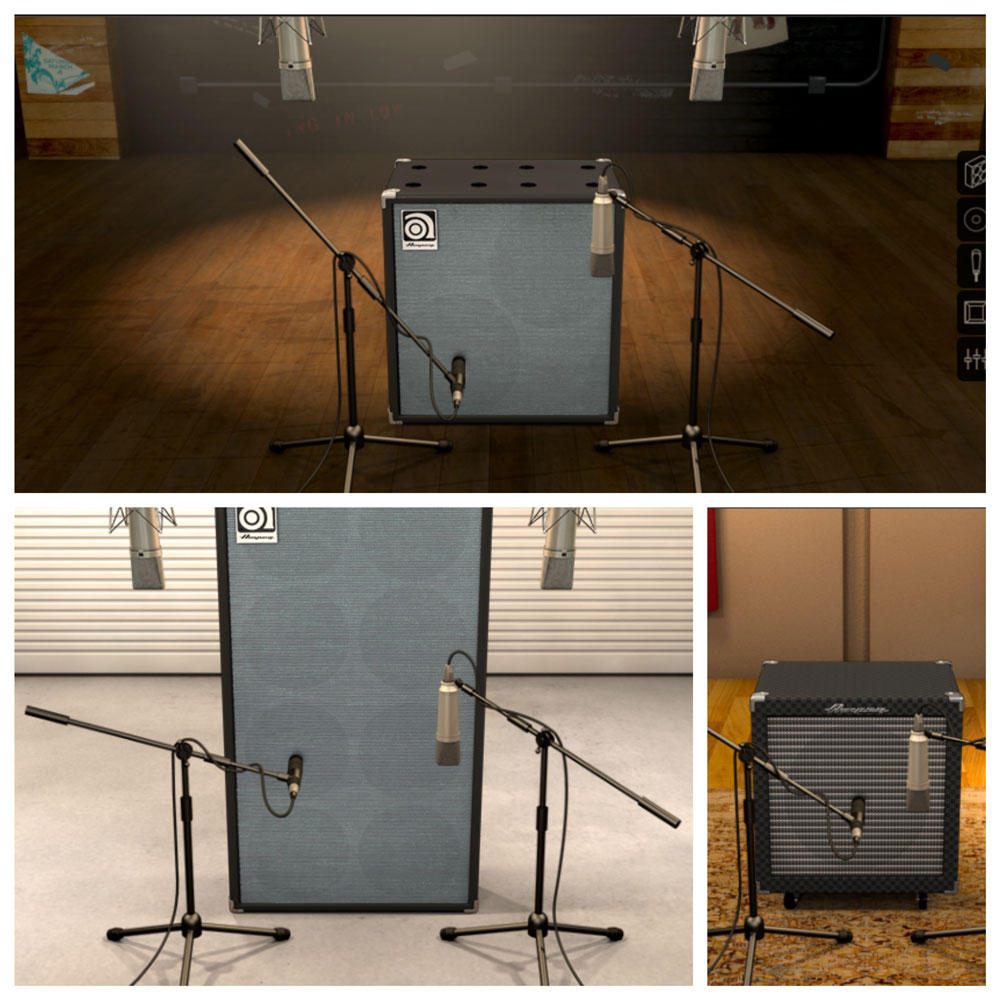Last Updated on November 7, 2017 by Andrew Culture
Although you can’t accuse IK Multimedia of resting on their laurels work-wise, new amplifier simulations for their AmpliTube software have been few and far between recently. Since the release of the fourth iteration of the popular guitar amp and effects plugin, they have only released two new add on packs, those being Fender Collection 2 and the Fulltone collection.
To be fair, they have worked on various other software releases, including the rather good Syntronik and a number of hardware interfaces and controllers, such as the iRig Keys I/O, but it’s always great when a manufacturer returns to, and evolves, existing software.
So, it was with a fanfare (and a little excitement on your reviewer’s part) that IKM released Ampeg SVX2. Rather than being an updated version of Ampeg SVX, IK have got hold of different amps and cabs to model, this time drawing from quite specific ‘vintage’ equipment.
3 new amps and 3 new cabs make up the software, which includes the Classic SVT-VR, V-4B and Heritage B-15N heads matched with the SVT-810AV, SVT-212AV and B-15N 115 speaker cabinets.
IK Multimedia Ampeg SVX2 – Installation
As with all IKM software, authorization and installation can be taken care of using their Authorization software and is a fairly simple affair. Type in your serial number, the authorizer adds it to your user account and then gives you the option to download the software if you haven’t already done so.
System requirements for AmpliTube 4 are fairly conservative by modern standards (see below) but it is highly recommended to have as fast a system as possible, particularly if you are going to use the modeling in real-time and need latency to be minimal or to run multiple instances in a DAW. If you aren’t already an AmpliTube user, SVX2 will run in the AmpliTube CS which is IKM’s cutdown ‘demo’ of the full software, but with some of the extra features of the full software disabled.
Bass in your face
Whether starting with an IKM preset or choosing from one of the three amps, AmpliTube also instantiates an appropriate speaker cabinet as well, choosing the cab that is matched with the head in real life. So, for the Heritage B-15N it gives you the B15N 1×15” cab. That’s not to say that you can’t decide to use a different cab however, and this is the beauty of virtual amp software; you can have a seemingly endless amount of choice for your guitar and bass tones. Unfortunately, this is also a curse unless you are strict with yourself and make timely decisions before getting lost down the rabbit hole of tweaking.
How low can you go?
It might seem a little frugal to only include three amps and three cabs, but by themselves this makes nine different combinations (twelve if you count the Heritage B-15N’s two distinct sounding channels) and that is before you experiment with the virtual room that the cab is in and what combination of close and ambient miking you decide on. The sounds themselves are excellent and, although I cannot profess to know whether all of these emulations match the real thing, they impart realness onto DI bass recordings. The fact that Ampeg officially licenses them says a lot, as they would have had their boffins run more than a passing ear over them as well.
A particular favourite in this collection is the aforementioned Heritage B-15N, which can deliver a tubby, Motown-esque sound through the 1964 channel. Switch to the 1966 channel and put the cabinet in the claustrophobic ‘booth’ environment and you have a brighter, more edgy sound heard on countless rock records from the late sixties and early seventies. For a media composer these easily accessible flavours and tones for guitar and bass recordings make context-dependent composition and recording a breeze and makes packages like IKM’s range a worthwhile investment.
So, there must be some downsides…well, not many to be fair. Apart from the aforementioned minimal stock of just three amps and three cabs, it is often noted when talking about this kind of software that the interaction between guitar/bass and amp isn’t quite the same as the real world. There is a certain responsiveness and energy in how a guitar plays when hooked up to a real amp and it’s still not quite there in sims yet, but this is true of all of them not just AmpliTube. This is however balanced with the fact that you don’t have to take out a second mortgage to invest in a variety of amps, cabs, mics etc. as well as somewhere to store and play them, so there are pros and cons for both.
But what does it sound like?
IK Multimedia Ampeg SVX2 – Conclusions
All in all, Ampeg SVX2 is a worthwhile addition to the AmpliTube range, especially as it increases the choices for bass players who always, unfortunately, lag behind guitarists with this kind of product. The small amount of amp/speaker choice may put some people off, although the price is very keen, but perhaps Ampeg SVX1 would be better if you haven’t already got it. The first Ampeg collection contains four amps, six cabs, eight effects pedals and some additional microphones, so is a better stocked package, but it really comes down to what you’re looking for. At the time of writing, IKM were offering various bundles based on the Ampeg range so you could snap up a bargain by getting everything together. Check out their website www.ikmultimedia.com to get the lowdown.
Ampeg SVX2 for Amplitude – Pros and Cons
Pros
- Ampeg sound for a fraction of the cost
- Advantages of trying out different amp/cab combinations
- If you’ve ever tried to move an Ampeg SVT 810, you’ll be thankful for software.
Cons
- No new additional mics or stomps with this collection
- Still not quite the same physical interaction as with a real amp
Cost (at time of publication)
- Ampeg SVX2 €99.99 (excl. VAT)
- Ampeg SVX2 UPGRADE from SVX1 €49.99 (excl. VAT)
- Ampeg SVX1 & 2 Bundle €149.99 (excl. VAT)
- Ampeg SVX Power DUO Bundle includes AmpliTube 4, Ampeg SVX1 & 2 €199.99 (excl. VAT)
Ampeg SVX2 System Requirements
AmpliTube is a 64-bit application and requires a 64-bit CPU and Operating System.
Mac® (64-bits)
- Minimal: Intel® Core™ 2 Duo, 2 GB of RAM (4 GB suggested), Mac OS X 10.7 or later.
- Supported Plug-in formats (64-bit): Audio Units, VST 2, VST 3, AAX.
Windows® (64-bits)
- Minimal: Intel® Core™ 2 Duo or AMD Athlon™ 64 X2, 2GB of RAM (4 GB suggested), Windows® 7, Windows® 8 or Windows® 10. Requires an ASIO compatible sound card.
- Supported Plug-in formats (64-bit): VST 2, VST 3, AAX.
Ampeg SVX2 gallery

